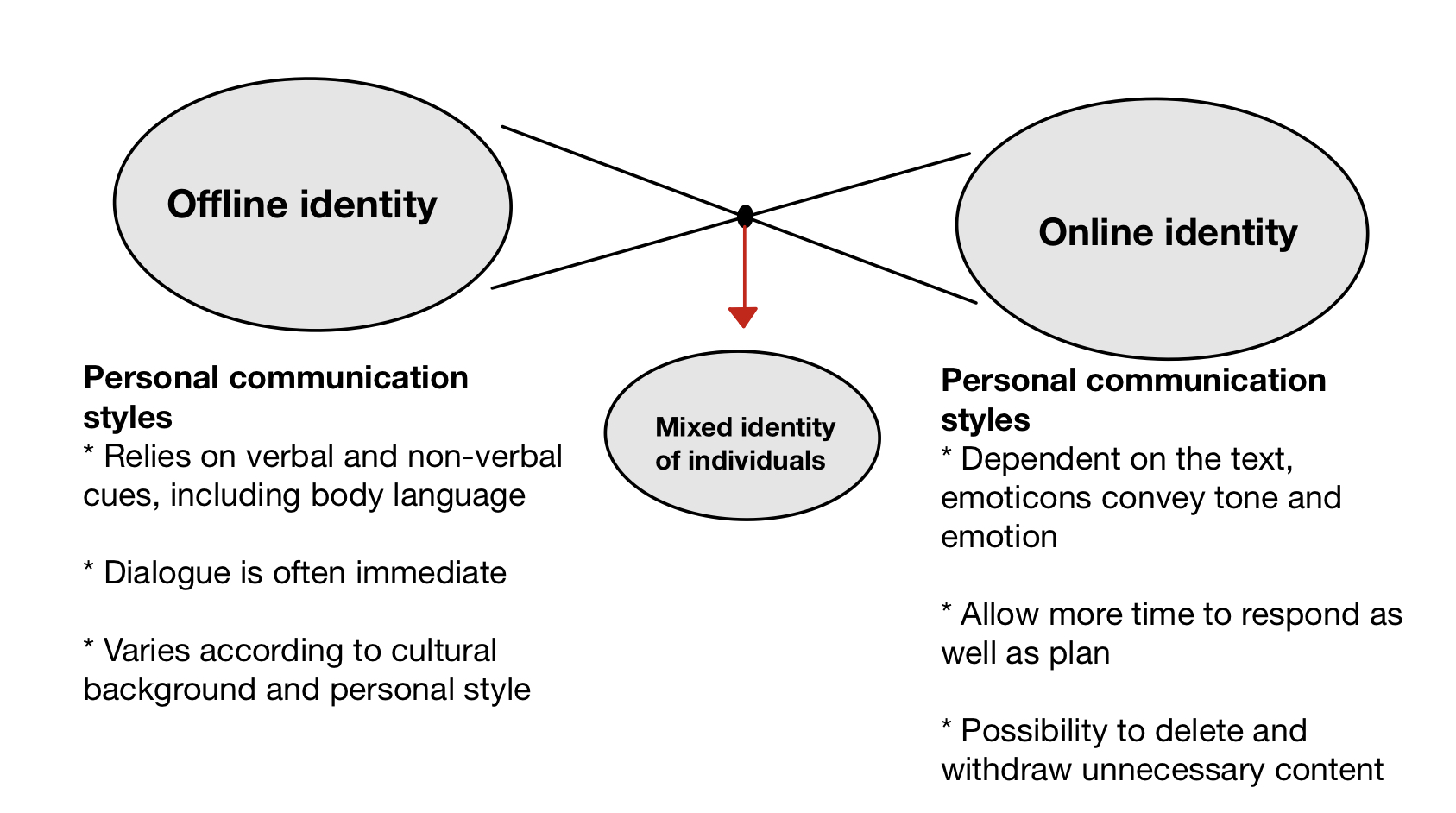In our evolving digital age, the issue of identity has taken on a new connotation in the online world. Individuals create and project their identities on digital platforms, while in the real world perhaps presenting another look to those around them, like a chameleon! This identity formation is a complex, multifaceted process influenced by social media and online information. Through Evring Goffman’s concepts of ‘staged metaphors‘ and ‘impression management’, we can see that digital identity formation is inherently performative.

“The performative nature of this social media“
Social media platforms have revolutionised the way we present ourselves to the world. On platforms like Instagram, Facebook, and TikTok, everyone can use “filters” and “PLOGs” to curate their online presence and show the world what they want the world to see.These posts, videos are often idealized images of identity, carefully retouched. This carefully crafted identity may not represent the true image of the individual, but rather a performative nature designed to attract fans and attention.
It is no coincidence that the Internet has spawned a myriad of digital communities and subcultures designed to provide people with a different sense of belonging and to form idiosyncratic identities. These communities can be based on the same interests, collections of big data patterns, or even with marginalised identities.
“individuals engage in a form of “impression management” in their everyday lives, similar to actors on a stage.”—–Erving Goffman

In the era of staged metaphors, we find a constant struggle: balancing authenticity and the craving for digital approval. This challenge is central to how individuals shape and uphold their online identities.

Digital communication and subcultures
These culturally diverse groups of people have their own distinct preferences, and the digital communities spawned by the Internet have developed unique identities.
For example, consider the case of “influencers” on Instagram who use filters, strategic lighting, and meticulously chosen backgrounds to create an aesthetically pleasing and aspirational image. This curated identity may not represent the complete truth of their lives but is a performance aimed at garnering attention and followers.

Alyss Bowen’s article examines the reasons why some people feel nervous when posting on Instagram, a platform with over 2 billion daily users worldwide. According to a study in the “Journal of Mass Media Heart and Culture,” Instagram can cause women aged 18-35 to feel anxious, discontent, and insecure about their appearance. Social media platforms exacerbate people’s desire to be liked, leading to an emotional toll. To reconcile the imbalance between their real and online identities, individuals engage in impression management.
Identity construction in the digital world is a complex and diverse process, and the performative nature of social media allows us to experience the emergence of different images of identity. However, the digital environment can also present potential pitfalls and challenges. It is not only image management in the digital world, but our digital identities also deserve to be used wisely to promote a better self.
References
Scannell, P. (2007). Media and communication. Sage publications, pp. 145-168. Available at:<https://www.vlebooks.com/Product/Index/47977?page=0&startBookmarkId=-1> [Accessed 2 November 2023]
Sherlock, M., & Wagstaff, D. L. (2019). Psychology of Popular Media Culture, 8(4), 482вАУ490. Available at:<https://doi.org/10.1037/ppm0000182> [Accessed 4 November 2023]





At the beginning of the article, the author puts forward and explains the theory, using the word “chameleon” to concretely illustrate the phenomenon of identity construction in the digital world, and uses the diagram to clearly show the difference for readers. The main body of content uses examples of how people present themselves on social media. The way people present themselves on the Internet is often their ideal identity information. Finally, because of this fictional digital world, there will be some negative effects, such as emotions. The author criticizes this phenomenon and gives some suggestions. The structure and ideas of the whole article are very clear and rigorous. Excellent!
You mentioned the difference in identity between offline and online. And like your blog title–“chameleon”, the identity can change at any time and anywhere on the Internet. You point out the main idea that “digital identity formation is inherently performative.” This is a good conclusion. Then you give more examples and explain how people perform their own satisfactory identity on social media. Finally, you are aware that a fake identity can bring anxiety to normal people and it will make some people feel emotion imbalance. It is important for people to keep themselves and using digital to improve themselves is also a good choice. Good job!
The vivid metaphor of the ‘chameleon’ combined with the graph as further elaborations really provides the image of the concept of ‘identity in a digital worldвАШ on this one.
Hi Ruoting, I have to admit that the title of your post did very much appeal to me. The use of an animal like the chameleon to represent Goffman’s theory conveys the diversity of digital identities. And you have given us a very good example through media platforms such as ins, which also relayed out Goffman’s stage theory. At the end of the blog, you also take a critical look at the problems that digital identities face in today’s society, reflecting on the diversity of digital identities using the example of women’s face anxiety. The blog did a great job of not only introducing the concept of digital identity, but also exploring the development of digital identity in terms of its strengths and weaknesses, which was great!